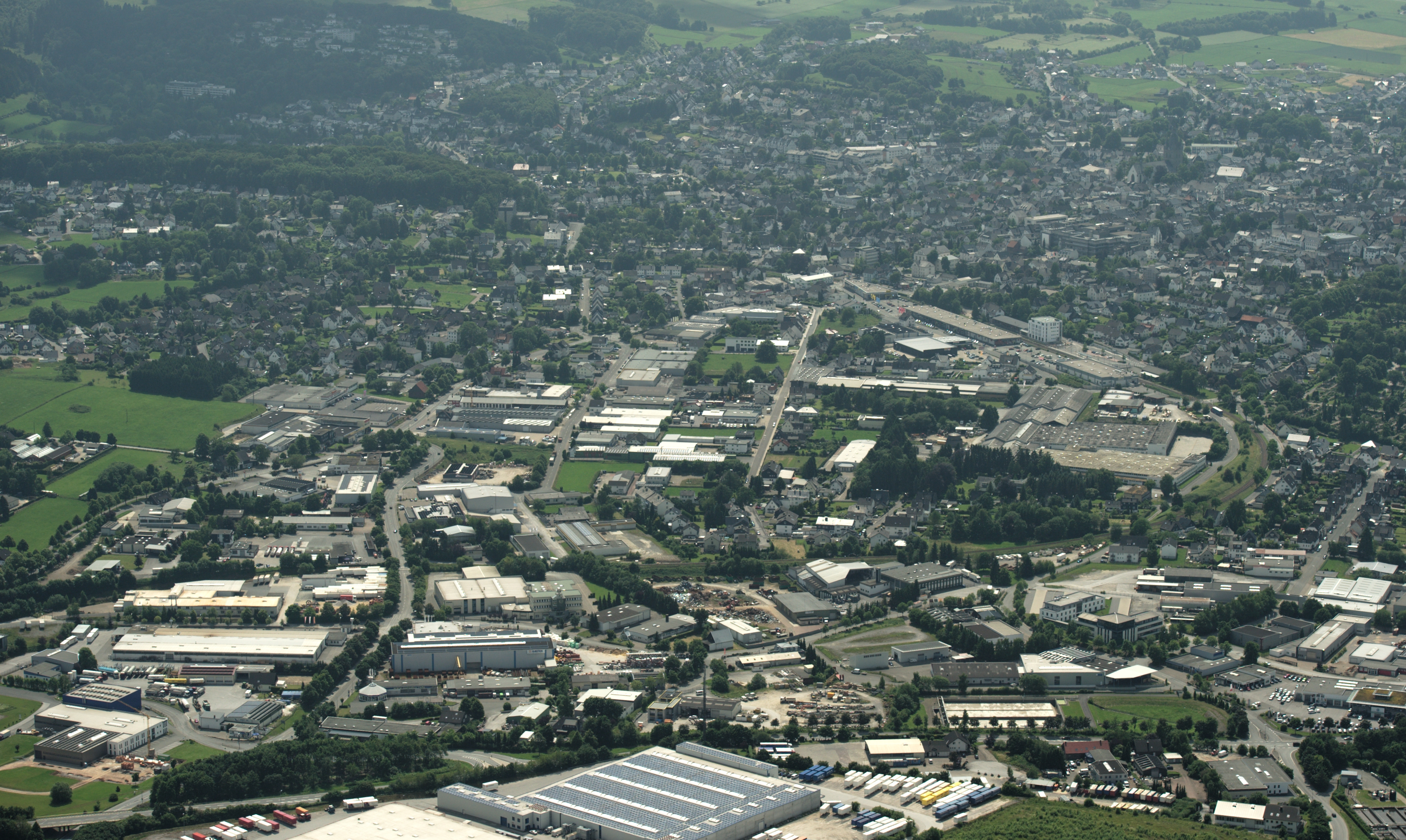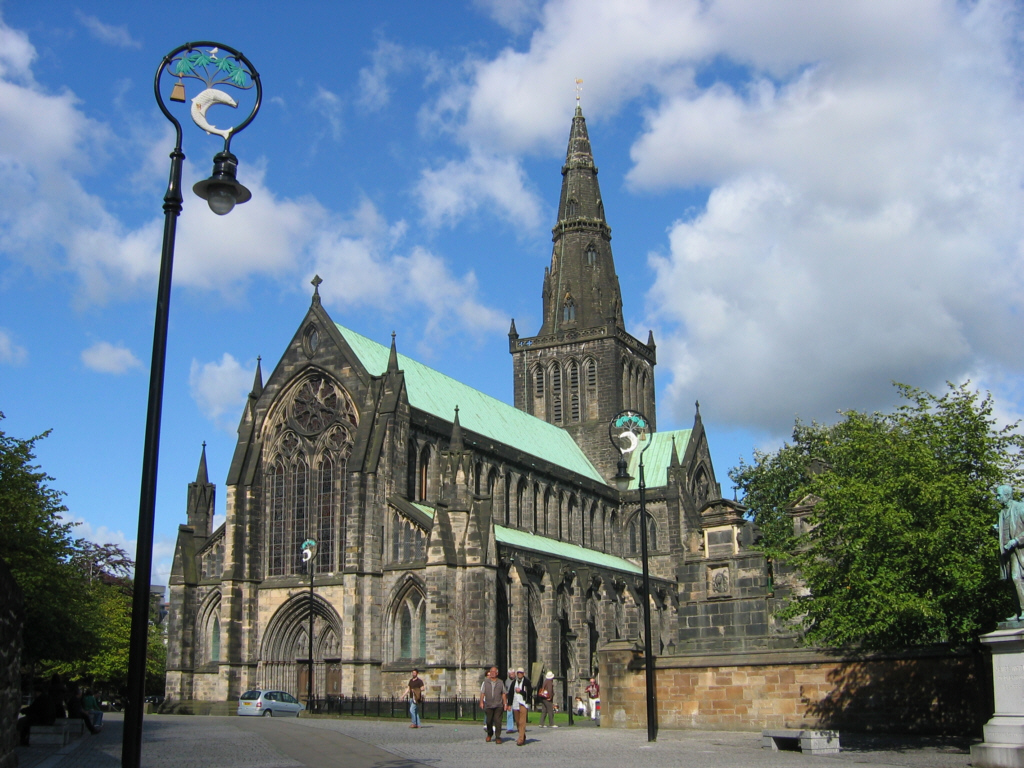|
Engelbert Seibertz (painter)
Engelbert Seibertz (20 April 1813, Brilon – 2 October 1905, Arnsberg) was a German portraitist and history painter. Life He was the eldest son of Johann Suibert Seibertz (1788–1871). He was only moderately successful in school and at age 17 he went to the Kunstakademie Düsseldorf, where he was taught by Carl Friedrich Lessing, Wilhelm von Schadow, Peter von Cornelius and Theodor Hildebrandt. His first surviving independent work was a drawing of the Bruchhauser Steine. He then moved to the Academy of Fine Arts, Munich in 1832. There he met Louis I of Bavaria's court painter Wilhelm von Kaulbach. Whilst in Munich he produced 74 artworks, including two monumental frescoes in the Maximilianeum. He moved back to his birthplace in 1835, making sketches and illustrations for '' Faust'' before moving to Prague for seven years in 1841 then Munich for twenty years in 1850. He created a total of 300 works for Maximilian II of Bavaria and designed glass windows for Glasgow Cat ... [...More Info...] [...Related Items...] OR: [Wikipedia] [Google] [Baidu] |
Brilon
Brilon (; Westphalian: ''Brailen'') is a town in North Rhine-Westphalia, central Germany, that belongs to the Hochsauerlandkreis. Geography Brilon is situated on the Brilon Heights at an altitude of about 450 m on the upper reaches of the river Möhne. The town lies between the Arnsberg Forest nature reserve to the west and the Lake Diemel nature reserve and the Hoppecke to the south-east. Neighboring municipalities Division of the town After the local government reforms of 1975 Brilon consists of 17 districts: * Alme (1.273 inhabitants) * Altenbüren (1.453 inhabitants) * Bontkirchen (553 inhabitants) * Brilon Town (14.513 inhabitants) * Brilon-Wald (595 inhabitants) * Esshoff (80 inhabitants) * Gudenhagen/Petersborn (1.273 inhabitants) * Hoppecke (1.330 inhabitants) * Madfeld (1.395 inhabitants) * Messinghausen (898 inhabitants) * Nehden (503 inhabitants) * Radlinghausen (129 inhabitants) * Rixen (143 inhabitants) * Rösenbeck (858 inhabitants) * Scharfenberg (1.533 ... [...More Info...] [...Related Items...] OR: [Wikipedia] [Google] [Baidu] |
Prague
Prague ( ; cs, Praha ; german: Prag, ; la, Praga) is the capital and largest city in the Czech Republic, and the historical capital of Bohemia. On the Vltava river, Prague is home to about 1.3 million people. The city has a temperate oceanic climate, with relatively warm summers and chilly winters. Prague is a political, cultural, and economic hub of central Europe, with a rich history and Romanesque, Gothic, Renaissance and Baroque architectures. It was the capital of the Kingdom of Bohemia and residence of several Holy Roman Emperors, most notably Charles IV (r. 1346–1378). It was an important city to the Habsburg monarchy and Austro-Hungarian Empire. The city played major roles in the Bohemian and the Protestant Reformations, the Thirty Years' War and in 20th-century history as the capital of Czechoslovakia between the World Wars and the post-war Communist era. Prague is home to a number of well-known cultural attractions, many of which survived ... [...More Info...] [...Related Items...] OR: [Wikipedia] [Google] [Baidu] |
1813 Births
Events January–March * January 18–January 23 – War of 1812: The Battle of Frenchtown is fought in modern-day Monroe, Michigan between the United States and a British and Native American alliance. * January 24 – The Philharmonic Society (later the Royal Philharmonic Society) is founded in London. * January 28 – Jane Austen's ''Pride and Prejudice'' is published anonymously in London. * January 31 – The Assembly of the Year XIII is inaugurated in Buenos Aires. * February – War of 1812 in North America: General William Henry Harrison sends out an expedition to burn the British vessels at Fort Malden by going across Lake Erie via the Bass Islands in sleighs, but the ice is not hard enough, and the expedition returns. * February 3 – Argentine War of Independence: José de San Martín and his Regiment of Mounted Grenadiers gain a largely symbolic victory against a Spanish royalist army in the Battle of San Lorenzo. * Febru ... [...More Info...] [...Related Items...] OR: [Wikipedia] [Google] [Baidu] |
People From Brilon
A person ( : people) is a being that has certain capacities or attributes such as reason, morality, consciousness or self-consciousness, and being a part of a culturally established form of social relations such as kinship, ownership of property, or legal responsibility. The defining features of personhood and, consequently, what makes a person count as a person, differ widely among cultures and contexts. In addition to the question of personhood, of what makes a being count as a person to begin with, there are further questions about personal identity and self: both about what makes any particular person that particular person instead of another, and about what makes a person at one time the same person as they were or will be at another time despite any intervening changes. The plural form " people" is often used to refer to an entire nation or ethnic group (as in "a people"), and this was the original meaning of the word; it subsequently acquired its use as a plural ... [...More Info...] [...Related Items...] OR: [Wikipedia] [Google] [Baidu] |
19th-century German Male Artists
The 19th (nineteenth) century began on 1 January 1801 ( MDCCCI), and ended on 31 December 1900 ( MCM). The 19th century was the ninth century of the 2nd millennium. The 19th century was characterized by vast social upheaval. Slavery was abolished in much of Europe and the Americas. The First Industrial Revolution, though it began in the late 18th century, expanding beyond its British homeland for the first time during this century, particularly remaking the economies and societies of the Low Countries, the Rhineland, Northern Italy, and the Northeastern United States. A few decades later, the Second Industrial Revolution led to ever more massive urbanization and much higher levels of productivity, profit, and prosperity, a pattern that continued into the 20th century. The Islamic gunpowder empires fell into decline and European imperialism brought much of South Asia, Southeast Asia, and almost all of Africa under colonial rule. It was also marked by the collapse of the la ... [...More Info...] [...Related Items...] OR: [Wikipedia] [Google] [Baidu] |
Sauerland
The Sauerland () is a rural, hilly area spreading across most of the south-eastern part of North Rhine-Westphalia, in parts heavily forested and, apart from the major valleys, sparsely inhabited. The Sauerland is the largest tourist region in North Rhine-Westphalia, in particular for mountain biking and cycling, water sports and scenic recreation. The town and Skiliftkarussell of Winterberg in the Hochsauerlandkreis is a major winter sport resort. Etymology The name ''Sauerland'' is first mentioned as ''Suderland'' in an official document from 1266. After 1400 the letter 'd' started to disappear. Therefore, Sauerland = ''southern country'' is the most convincing meaning, opposed to the theory that Sauer is from the German word ''sauer'' meaning ''sour'' (poor "sour" soil). Linguistically, "suder-“ is similar to the Old Saxon ''sûðar'' (southbound). History Before 1800 the western part of the Sauerland was part of the County of the Mark based in Altena; the eastern p ... [...More Info...] [...Related Items...] OR: [Wikipedia] [Google] [Baidu] |
Glasgow Cathedral
Glasgow Cathedral ( gd, Cathair-eaglais Ghlaschu) is a parish church of the Church of Scotland in Glasgow, Scotland. It is the oldest cathedral in mainland Scotland and the oldest building in Glasgow. The cathedral was the seat of the Archbishop of Glasgow, and the mother church of the Archdiocese of Glasgow and the Province of Glasgow, until the Scottish Reformation in the 16th century. Glasgow Cathedral and St Magnus Cathedral in Orkney are the only medieval cathedrals in Scotland to have survived the Reformation virtually intact. The medieval Bishop's Castle, Glasgow, Bishop's Castle stood to the west of the cathedral until the 18th century. The cathedral is dedicated to Saint Mungo, the patron saint of Glasgow, whose tomb lies at the centre of the building's Lower Church. The first stone cathedral was dedicated in 1136, in the presence of David I of Scotland, David I. Fragments of this building have been found beneath the structure of the present cathedral, which was dedicate ... [...More Info...] [...Related Items...] OR: [Wikipedia] [Google] [Baidu] |
Maximilian II Of Bavaria
Maximilian II (28 November 1811 – 10 March 1864) reigned as King of Bavaria between 1848 and 1864. Unlike his father, King Ludwig I, "King Max" was very popular and took a greater interest in the business of Government than in personal extravagance. Ascending the throne during the German Revolution of 1848, King Maximilian restored stability in his kingdom. The rest of his reign was characterized by attempts to maintain Bavarian independence during the wars of German Unification and to transform his capital city of Munich into a cultural and educational city. Crown Prince He was born in Munich and was the eldest son of the Crown Prince of Bavaria (later King Ludwig I) and his wife Therese of Saxe-Hildburghausen. After studying at Göttingen and Berlin and travelling in Germany, Italy and Greece, he was introduced by his father into the council of state (1836). From the first he showed a studious disposition, declaring on one occasion that had he not been born in a royal crad ... [...More Info...] [...Related Items...] OR: [Wikipedia] [Google] [Baidu] |
Faust (Goethe)
''Faust'' is a tragic play in two parts by Johann Wolfgang von Goethe, usually known in English as '' Faust, Part One'' and '' Faust, Part Two''. Nearly all of Part One and the majority of Part Two are written in rhymed verse. Although rarely staged in its entirety, it is the play with the largest audience numbers on German-language stages. ''Faust'' is considered by many to be Goethe's ''magnum opus'' and the greatest work of German literature. The earliest forms of the work, known as the ''Urfaust'', were developed between 1772 and 1775; however, the details of that development are not entirely clear. ''Urfaust'' has twenty-two scenes, one in prose, two largely prose and the remaining 1,441 lines in rhymed verse. The manuscript is lost, but a copy was discovered in 1886. The first appearance of the work in print was ''Faust, a Fragment'', published in 1790. Goethe completed a preliminary version of what is now known as ''Part One'' in 1806. Its publication in 1808 was follow ... [...More Info...] [...Related Items...] OR: [Wikipedia] [Google] [Baidu] |



_1938.jpg)


